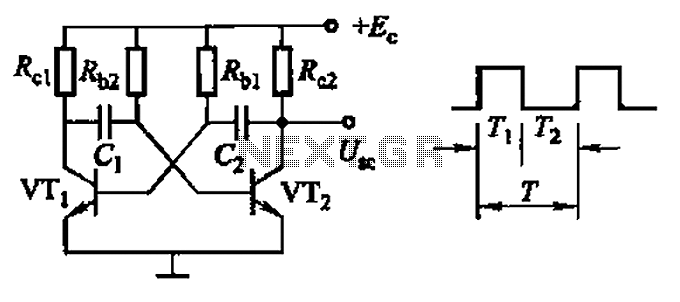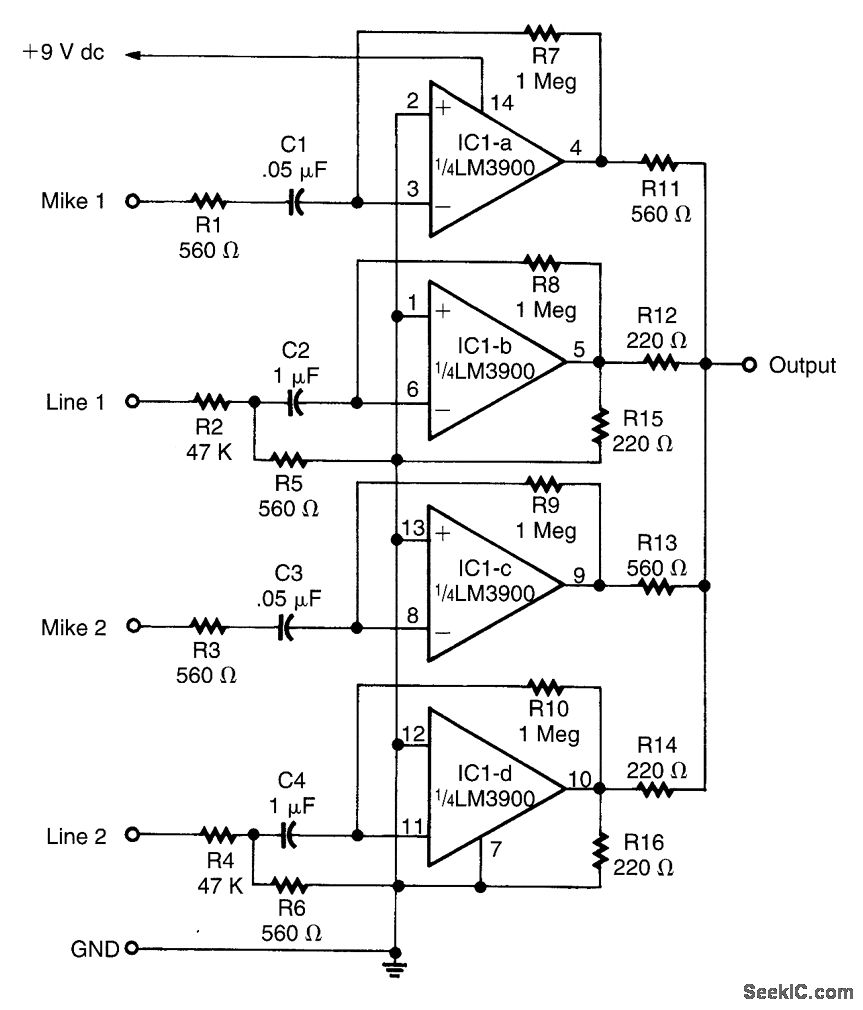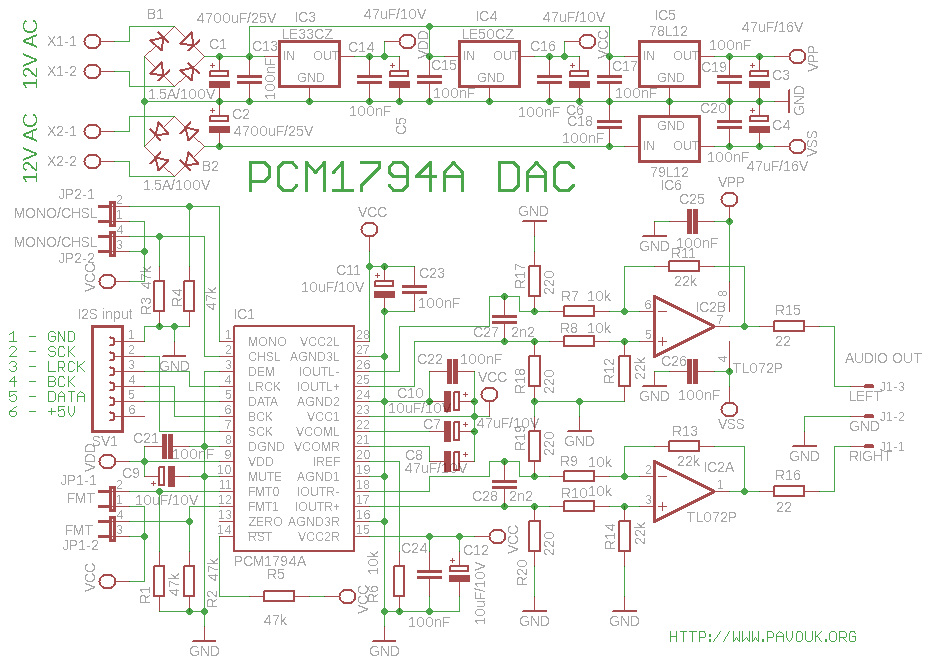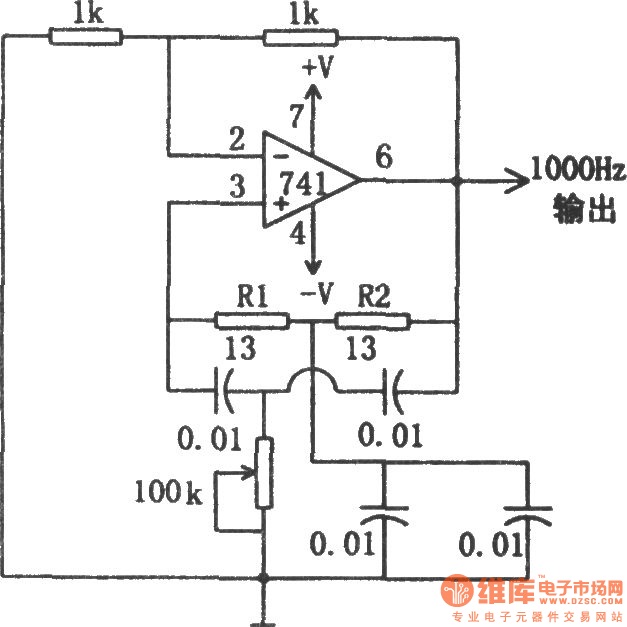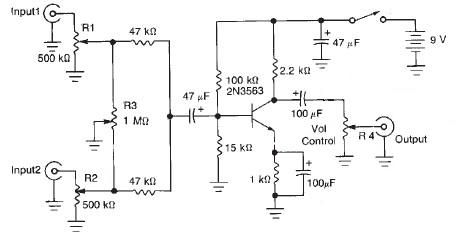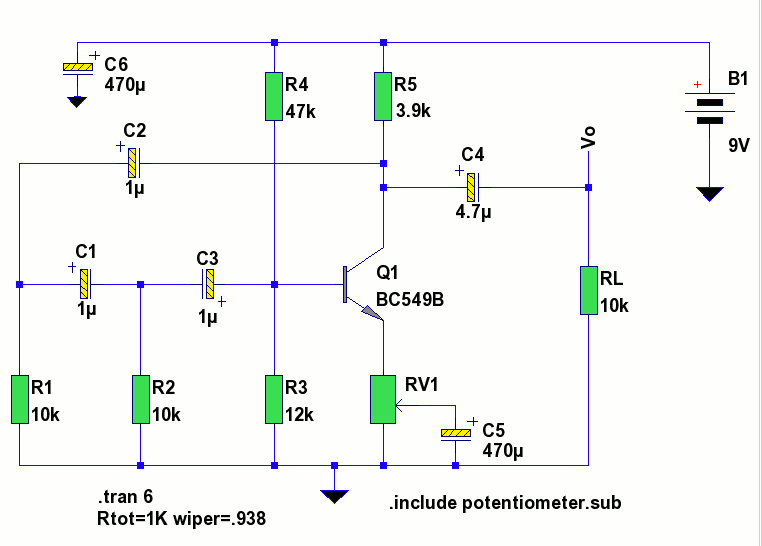
Hewlett-Packard HP-200C audio oscillator
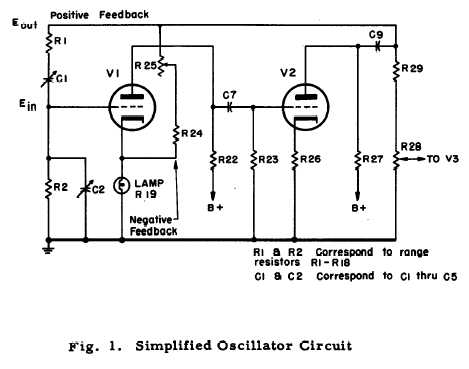
After repairing several Hewlett Packard vacuum tube voltmeters, research was conducted on the company's history. An HP-200C oscillator was located, which closely resembles the company's initial product. It is a Wien bridge resistance-tuned oscillator featuring a light bulb stabilized negative feedback circuit designed by William Hewlett during his graduate studies at Stanford (Patent #2268872, application filed in 1939 and granted in 1942). The original HP-200 was constructed and sold from Hewlett's garage alongside fellow Stanford graduate David Packard, marking the establishment of Hewlett-Packard. Although a schematic for the 200C was not available, the schematic for the 200I was sufficiently similar, using nearly identical vacuum tubes (6F6, 6V6, and 6SJ7 for the electrically identical 6J7) in both the oscillator and amplifier circuits. The output for the 200C is specified as 100 milliwatts, delivering 10 volts into a 1000-ohm load. Although labeled an audio oscillator, it encompasses the entire audio spectrum, with an upper range extending beyond audio into the VLF radio range at 200 KHz. The HP-200C was found in poor condition and had not been powered for many years. Contact cleaner was applied to the range switch and volume control, resolving issues with tracking. The power switch exhibited no continuity, which was remedied by applying contact cleaner through the bat handle with the switch facing upward. The power cord was replaced with a new grounded cable, followed by a thorough cleaning of the unit and verification of safety and appropriate resistance levels in the B+ line. The rectifier was removed, and a variac was used to gradually power the filaments while checking for proper AC voltages at the rectifier socket. Subsequently, the unit was powered up slowly with the rectifier in place, reforming the electrolytics correctly. An oscilloscope confirmed that the unit operated across all ranges. A frequency counter was used to adjust the capacitor for optimal dial accuracy. Some range resistors had been replaced earlier in the device's lifespan, but dial accuracy across ranges indicated that they remained in good condition. A low-level DC bias was noted on the oscillator output, which was confirmed to be normal according to the 200I manual. A 20 µF electrolytic capacitor is utilized as the output capacitor, and it is presumed that some leakage in the capacitor contributes to the DC bias. The 200I manual cautions against using the output with high-quality audio transformers due to the DC component. The next generation, the HP-200CD, employs special transformers for output. The 200C exhibited stability on the oscilloscope, functioning as intended, with visible stabilizing action from the negative feedback light bulb element during range switching. An early HP catalog outlines the circuit principles, advantages, and applications of the device.
The HP-200C oscillator is a significant advancement in audio-frequency generation technology, designed to overcome common issues associated with traditional oscillators. Its Wien bridge configuration allows for precise frequency tuning, while the light bulb feedback mechanism enhances stability and performance across a wide frequency range. The oscillator operates efficiently within the audio spectrum and extends into the VLF radio range, making it suitable for various applications in electronics and communications.
The construction of the HP-200C involves critical components such as vacuum tubes, which serve as amplifiers and oscillators, providing the necessary gain and frequency generation. The use of a 20 µF electrolytic capacitor in the output stage is noteworthy, as it plays a crucial role in shaping the output signal while potentially introducing a DC bias, which must be managed when interfacing with other audio equipment.
The historical context of the HP-200 series highlights its significance in the evolution of electronic test equipment. The challenges faced by early audio oscillators, such as stability and portability, were addressed through innovative design solutions implemented by Hewlett and Packard. The legacy of the HP-200C continues to influence modern oscillator designs, emphasizing the importance of reliability and accuracy in electronic measurements.After repairing a couple of Hewlett Packard vacuum tube voltmeters, I read up on some of the company history. I was able to locate a HP-200C oscillator. This HP-200C is very close in design to the company`s initial product. It is a Wien bridge resistance-tuned oscillator with the famous light-bulb stabilized negative feedback circuit designed by W
iliam Hewlett while doing graduate work at Stanford. (Patent #2268872. Application filed in 1939 and granted in 1942) The original HP-200 was built and sold out of Hewlett`s garage with fellow Stanford grad David Packard, marking the founding of Hewlett-Packard. I did not have a schematic for the 200C but the schematic for the 200I was close enough with nearly identical vacuum tubes (6F6, 6V6, and 6SJ7 for electrically identical 6J7) in the oscillator and amplifier circuits.
Output for the 200C is specified as 100 milliwatts, 10 volts into a 1000 ohm load. Although this is labeled an audio oscillator, and it does indeed cover the full audio spectrum, its upper range is well beyond audio, in the VLF radio range at 200 KHz. The HP-200C was in rather rough condition and had not been powered for many years. I used contact cleaner on the range switch and the volume control. The volume control had not tracked properly, but opening it and applying contact cleaner directly solved the problem.
The power switch also showed no continuity. Contact cleaner was applied through the bat handle with the switch facing upwards. That cured the switch problem. The power cord was replaced with a new grounded cable. This was followed by a thorough cleaning of the set and checking for safety and a proper level of resistance in the B+ line. The rectifier was pulled out and a variac used to power the set slowly for just the filaments and checking for proper AC voltages at the rectifier socket.
This was followed by a slow power-up with the rectifier in and reforming the electrolytics properly. A check with my oscilloscope showed the unit working on all its ranges. Using a frequency counter, the cap was adjusted for best dial accuracy. Apparently some of the range resistors had ben replaced earlier in its life. Dial accuracy from one range to another confirmed that the resistors were still in good order. I noticed a low level DC bias on the output of the oscillator but learned from the 200I manual that that was normal. A 20 MFD electrolytic is used as the output capacitor. I am assuming that some leakage in the cap is the cause of the DC bias. The 200I manual warns against using the output on a high-quality audio transformer because of the DC component.
The next generation HP-200CD uses special transformers for output. The 200C proved quite stable on the scope, performing as intended. I could see the stabilizing action of the negative feedback light bulb element when switching ranges. An early HP catalog details the circuit principle and the advantages and uses for the device. "THERE is a sound research story behind this revolutionary -hp- Resistance-tuned Audio Oscillator. Although audio-frequency oscillators have always been standard equipment throughout the communications and electronics fields, there were many "bugs" in types commonly available.
These disadvantages included low stability, especially in the lower frequency ranges; need for constant resetting to insure accuracy; low portability, because of the essential weight and bulk of the instrument. So -hp- engineers set out to design and perfect an audio-frequency oscillator which would combine the high stability and very wide range of the coil-condenser type with the flexibility of operation of the best frequency type.
The result is the basically new Resistance-tuned Audio-frequency Oscillator, based on a new fundamental circuit and resulting in new speed and accuracy for electronic tests and measurements. " (HP catalog 1945) 🔗 External reference
The HP-200C oscillator is a significant advancement in audio-frequency generation technology, designed to overcome common issues associated with traditional oscillators. Its Wien bridge configuration allows for precise frequency tuning, while the light bulb feedback mechanism enhances stability and performance across a wide frequency range. The oscillator operates efficiently within the audio spectrum and extends into the VLF radio range, making it suitable for various applications in electronics and communications.
The construction of the HP-200C involves critical components such as vacuum tubes, which serve as amplifiers and oscillators, providing the necessary gain and frequency generation. The use of a 20 µF electrolytic capacitor in the output stage is noteworthy, as it plays a crucial role in shaping the output signal while potentially introducing a DC bias, which must be managed when interfacing with other audio equipment.
The historical context of the HP-200 series highlights its significance in the evolution of electronic test equipment. The challenges faced by early audio oscillators, such as stability and portability, were addressed through innovative design solutions implemented by Hewlett and Packard. The legacy of the HP-200C continues to influence modern oscillator designs, emphasizing the importance of reliability and accuracy in electronic measurements.After repairing a couple of Hewlett Packard vacuum tube voltmeters, I read up on some of the company history. I was able to locate a HP-200C oscillator. This HP-200C is very close in design to the company`s initial product. It is a Wien bridge resistance-tuned oscillator with the famous light-bulb stabilized negative feedback circuit designed by W
iliam Hewlett while doing graduate work at Stanford. (Patent #2268872. Application filed in 1939 and granted in 1942) The original HP-200 was built and sold out of Hewlett`s garage with fellow Stanford grad David Packard, marking the founding of Hewlett-Packard. I did not have a schematic for the 200C but the schematic for the 200I was close enough with nearly identical vacuum tubes (6F6, 6V6, and 6SJ7 for electrically identical 6J7) in the oscillator and amplifier circuits.
Output for the 200C is specified as 100 milliwatts, 10 volts into a 1000 ohm load. Although this is labeled an audio oscillator, and it does indeed cover the full audio spectrum, its upper range is well beyond audio, in the VLF radio range at 200 KHz. The HP-200C was in rather rough condition and had not been powered for many years. I used contact cleaner on the range switch and the volume control. The volume control had not tracked properly, but opening it and applying contact cleaner directly solved the problem.
The power switch also showed no continuity. Contact cleaner was applied through the bat handle with the switch facing upwards. That cured the switch problem. The power cord was replaced with a new grounded cable. This was followed by a thorough cleaning of the set and checking for safety and a proper level of resistance in the B+ line. The rectifier was pulled out and a variac used to power the set slowly for just the filaments and checking for proper AC voltages at the rectifier socket.
This was followed by a slow power-up with the rectifier in and reforming the electrolytics properly. A check with my oscilloscope showed the unit working on all its ranges. Using a frequency counter, the cap was adjusted for best dial accuracy. Apparently some of the range resistors had ben replaced earlier in its life. Dial accuracy from one range to another confirmed that the resistors were still in good order. I noticed a low level DC bias on the output of the oscillator but learned from the 200I manual that that was normal. A 20 MFD electrolytic is used as the output capacitor. I am assuming that some leakage in the cap is the cause of the DC bias. The 200I manual warns against using the output on a high-quality audio transformer because of the DC component.
The next generation HP-200CD uses special transformers for output. The 200C proved quite stable on the scope, performing as intended. I could see the stabilizing action of the negative feedback light bulb element when switching ranges. An early HP catalog details the circuit principle and the advantages and uses for the device. "THERE is a sound research story behind this revolutionary -hp- Resistance-tuned Audio Oscillator. Although audio-frequency oscillators have always been standard equipment throughout the communications and electronics fields, there were many "bugs" in types commonly available.
These disadvantages included low stability, especially in the lower frequency ranges; need for constant resetting to insure accuracy; low portability, because of the essential weight and bulk of the instrument. So -hp- engineers set out to design and perfect an audio-frequency oscillator which would combine the high stability and very wide range of the coil-condenser type with the flexibility of operation of the best frequency type.
The result is the basically new Resistance-tuned Audio-frequency Oscillator, based on a new fundamental circuit and resulting in new speed and accuracy for electronic tests and measurements. " (HP catalog 1945) 🔗 External reference
